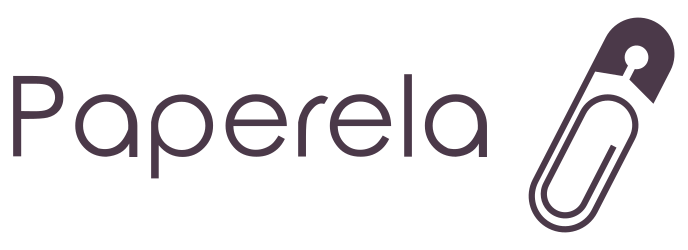
Top 12 Little-Known Savings Tips for Cutting Expenses Fast

Are you looking for the best ways to save money? Saving money often feels like a daunting task, but it doesn’t have to be. Many people overlook small, actionable steps that can lead to significant savings over time. Below are savings tips to help cut expenses fast while keeping daily routines intact.
12 Smart Savings Tips for Fast Expense Reduction
1. Create a Budget
Effective budgeting helps control spending by prioritizing essential expenses. Use a budgeting system, such as the 50/30/20 rule, which allocates 50% to needs, 30% to wants, and 20% to savings. Monitoring income and expenses closely identifies areas where cuts can be made. This practice ensures that savings grow while maintaining financial stability.

Yan Krukau | Pexels | Use a budgeting system, such as the 50/30/20 rule, which allocates 50% to needs, 30% to wants, and 20% to savings.
2. Refinancing Loans
Whether it’s a mortgage or auto loan, refinancing at a lower interest rate can lead to significant savings. Research current interest rates and refinancing options to determine potential savings. Reducing monthly payments by even a small percentage can free up cash for other financial goals. Regularly review loan terms to ensure you’re not overpaying.
3. Cancel Unnecessary Subscriptions
Subscription services can add up over time, especially when they’re no longer used. Review monthly statements and cancel subscriptions that aren’t essential. Streaming services, apps, and memberships may feel inexpensive individually, but eliminating a few can result in substantial monthly savings. Set calendar reminders to cancel free trials before they convert to paid subscriptions.
4. Use the 30-Day Rule to Delay Purchases
Impulse buying can drain finances. Use the 30-day rule to curb unnecessary spending. Wait 30 days before making a purchase, giving yourself time to reconsider. Often, the desire fades, saving money. If waiting a full month seems challenging, shorten the period to 24 or 48 hours, which can still prevent hasty purchases.
5. Lower Car Expenses
Car-related costs often go unnoticed but can be reduced significantly. Refinance auto loans at lower rates, shop for cheaper insurance, or cut fuel consumption by driving less. Simple maintenance, like keeping tires properly inflated, can also improve fuel efficiency. Reducing driving distance and eliminating heavy items from the trunk lowers ongoing costs.
6. Delay Major Purchases
Large purchases of appliances, furniture, cars, and electronics should never be rushed. Instead of buying immediately, plan for them over several months. This method allows for saving in advance rather than relying on credit, which adds interest to the cost. It also provides time to research better deals, further cutting overall expenses.
7. Cook at Home More Often
Restaurant meals, while convenient, can quickly erode a budget. Cooking at home offers a lower-cost alternative, allowing better control over both food quality and spending. Consider preparing meals in batches to save time and money. If dining out is still desired, minimize costs by choosing appetizers or splitting entrees, skipping expensive drinks and desserts.

On Shot | Pexels | Cooking at home offers a lower-cost alternative, allowing better control over both food quality and spending.
8. Stock Up on Household Supplies When They’re on Sale
Purchasing household items in bulk, particularly when they’re on sale, can reduce spending. Items like toiletries, cleaning supplies, and pantry staples are often cheaper in larger quantities. Keep track of sales at your favorite stores and stock up during promotions. Bulk buying can result in significant savings over time, especially when paired with loyalty programs or coupons.
9. Pay Off High-Interest Debt
Debt with high-interest rates, such as credit cards, can severely impact a budget. Focus on paying off these debts quickly by making extra payments whenever possible. This reduces the overall interest paid and frees up funds for savings. If paying extra isn’t an option, consider side gigs to bring in additional income that goes directly toward debt reduction.
10. Plan Grocery Trips
Avoid impulse buys by planning grocery shopping trips carefully. Before heading to the store, check what’s already in the pantry and make a list. Sticking to this list reduces overspending. Additionally, use grocery store loyalty programs or apps that offer cashback on purchases. Paying with a credit card that offers grocery rewards can further increase savings.
11. Bundle Services
Television, internet, and phone services can often be bundled, leading to lower overall costs. Many providers offer significant discounts when customers combine these services. Bundling can result in savings of hundreds of dollars annually. Evaluate your service usage and consider cutting back on unnecessary add-ons, like premium channels or extra data packages.
12. Attend Free Community Events
Entertainment costs can be steep, but free community events offer a budget-friendly alternative. Check local listings for free festivals, concerts, or library programs. Community events provide opportunities for low-cost entertainment while supporting local initiatives. Families can also benefit from these activities, as many events are child-friendly and offer an affordable way to keep kids engaged.
More in Business
-
`
Investor David Einhorn Thinks Peloton Can Be Worth Five Times More IF It Cuts Costs
David Einhorn, founder and president of Greenlight Capital, has a bold vision for Peloton. He believes the struggling fitness company could...
November 7, 2024 -
`
How Interactive Matter Maps Improve Legal Research and Planning
Interactive matter maps have transformed legal research and planning by simplifying how law firms manage complex matters. These tools help legal...
November 1, 2024 -
`
The Role of Global Mobility in Business Planning for 2025
In an era where the competition for top talent is fierce, the significance of global mobility in business planning cannot be...
November 1, 2024 -
`
Will AI Legal Advice Empower or Exclude Those in Need of Justice?
The rapid advancement of technology has introduced AI legal advice into the legal profession, creating both excitement and concern. Law firms,...
October 25, 2024 -
`
Trump vs. Harris – Who Does Hollywood Support?
As the race for the White House heats up, celebrity endorsements have become an influential force in shaping public opinion during...
October 22, 2024 -
`
How to Understand Your Energy Bill and Prevent Common Billing Errors
Understanding your energy bill is essential for managing household expenses and catching potential errors. Your energy bill offers a breakdown of...
October 18, 2024 -
`
Is Shawn Mendes’ Relationship With Camila Cabello Finally Clarified?
Recently, Shawn Mendes shared insights into his connection with Camila Cabello during an interview with Jay Shetty. Their relationship, which has...
October 15, 2024 -
`
China Stimulus Fuels Market Surge, But Can It Save the Ailing Economy?
The recent China stimulus measures have sparked renewed optimism in the markets, but doubts remain about whether these efforts will be...
October 10, 2024 -
`
Is Legal Advice from ChatGPT Trustworthy?
Legal advice from ChatGPT may seem like a convenient and cost-effective solution for those facing legal challenges. AI tools like ChatGPT...
October 5, 2024















You must be logged in to post a comment Login